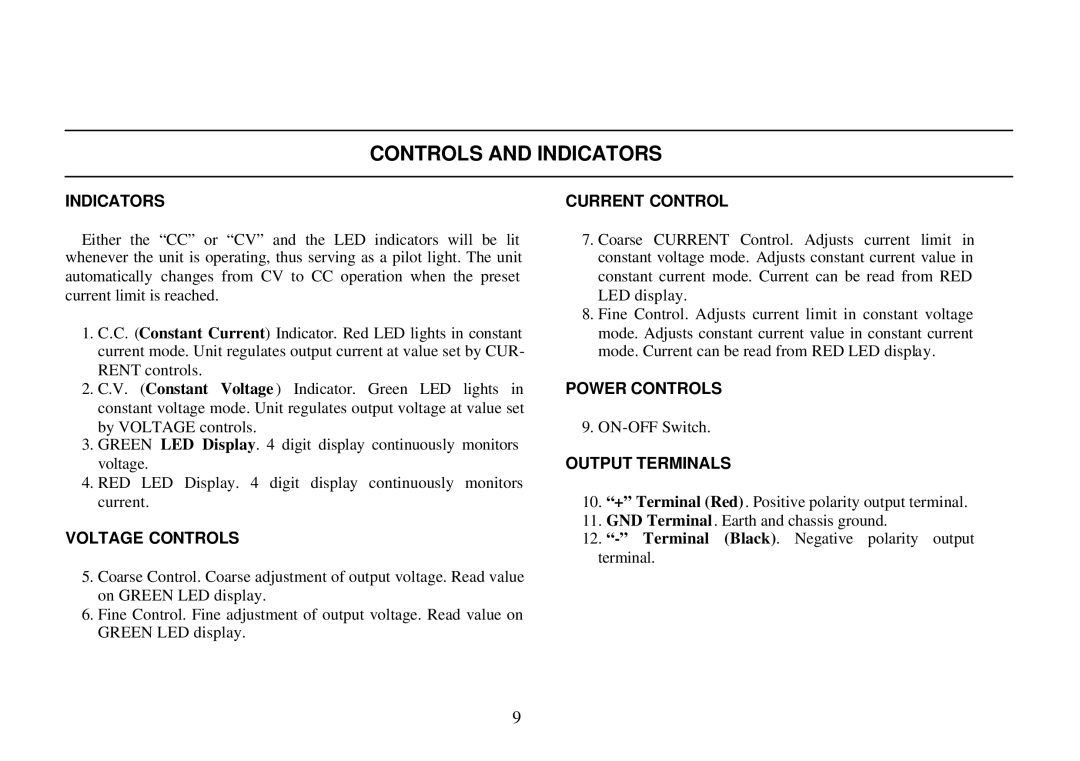0-30V, 0-3A specifications
The B&K 0-30V, 0-3A power supply is a versatile and reliable laboratory instrument designed for various applications in electronics and electrical engineering. Known for its precision and efficiency, this device is an essential tool for engineers, researchers, and hobbyists alike.One of the main features of the B&K power supply is its adjustable output voltage ranging from 0 to 30 volts. This wide voltage range allows users to test and power a variety of electronic devices and circuits, ensuring compatibility with different components. The current output is rated at 0 to 3 amperes, providing ample power for most standard applications while adhering to safety standards and preventing overload situations.
The device employs advanced linear regulation technology, which guarantees low ripple and noise levels in the output signal. This ensures that sensitive electronic components receive a stable and clean power supply, which is crucial in maintaining the integrity of experimental results. Additionally, the linear design contributes to the longevity and durability of the power supply, making it an enduring choice for professionals.
Another notable characteristic is its user-friendly interface, featuring easy-to-read analog meters that provide real-time feedback on voltage and current levels. This feature enhances the precision of adjustments and simplifies the monitoring of power output during experiments. Moreover, the intuitive layout of controls allows users to make quick adjustments without navigating through complex menus.
The B&K 0-30V, 0-3A power supply is also designed with safety in mind. It incorporates overload protection and short circuit protection mechanisms, which safeguard both the power supply and the connected devices from damage. This level of protection is essential in laboratory settings where equipment cost can be significant.
In terms of build quality, the B&K power supply is constructed with robust materials that ensure impact resistance and reliability. Its compact design makes it easy to fit into crowded workbenches, while still providing ample connectivity options.
Overall, the B&K 0-30V, 0-3A power supply stands out in its category with its remarkable features, advanced technologies, and reliable characteristics. Its combination of precision, durability, and safety makes it a preferred choice for anyone involved in electronics testing, prototyping, and research. Whether in a professional laboratory or a DIY setting, this power supply delivers performance that meets the demanding needs of modern electronics.
